Delivering Growth in Salford
Salford, a vibrant city in western Greater Manchester, is undergoing a major transformation through its ambitious and continuous regeneration plans. Over the past decade, the city has experienced remarkable growth, with its population increasing by 15.4%, the largest percentage increase in the Northwest.
This surge in population has been accompanied by significant economic development. Salford's economy continues to expand, creating new opportunities for local people. In the past decade, over 20,000 new homes have been built, including over 3000 classified as affordable. The city is now home to 11,000 businesses and boasts the highest productivity in Greater Manchester.
Looking ahead, Salford has a bold vision to deliver 40,000 new homes and 40,000 new jobs by 2040 within its four strategic growth locations: City Centre Salford, MediaCityUK and The Quays, Greater Manchester Western Gateway, and Salford’s ongoing town projects like the regeneration of Eccles and Swinton.
The city aims to deliver thousands of new homes, jobs, and commercial spaces. These developments, including the £1 billion expansion of MediaCity, are positioned to deliver Salford’s economic growth, enhance its cultural offering, and improve the quality of life for residents.
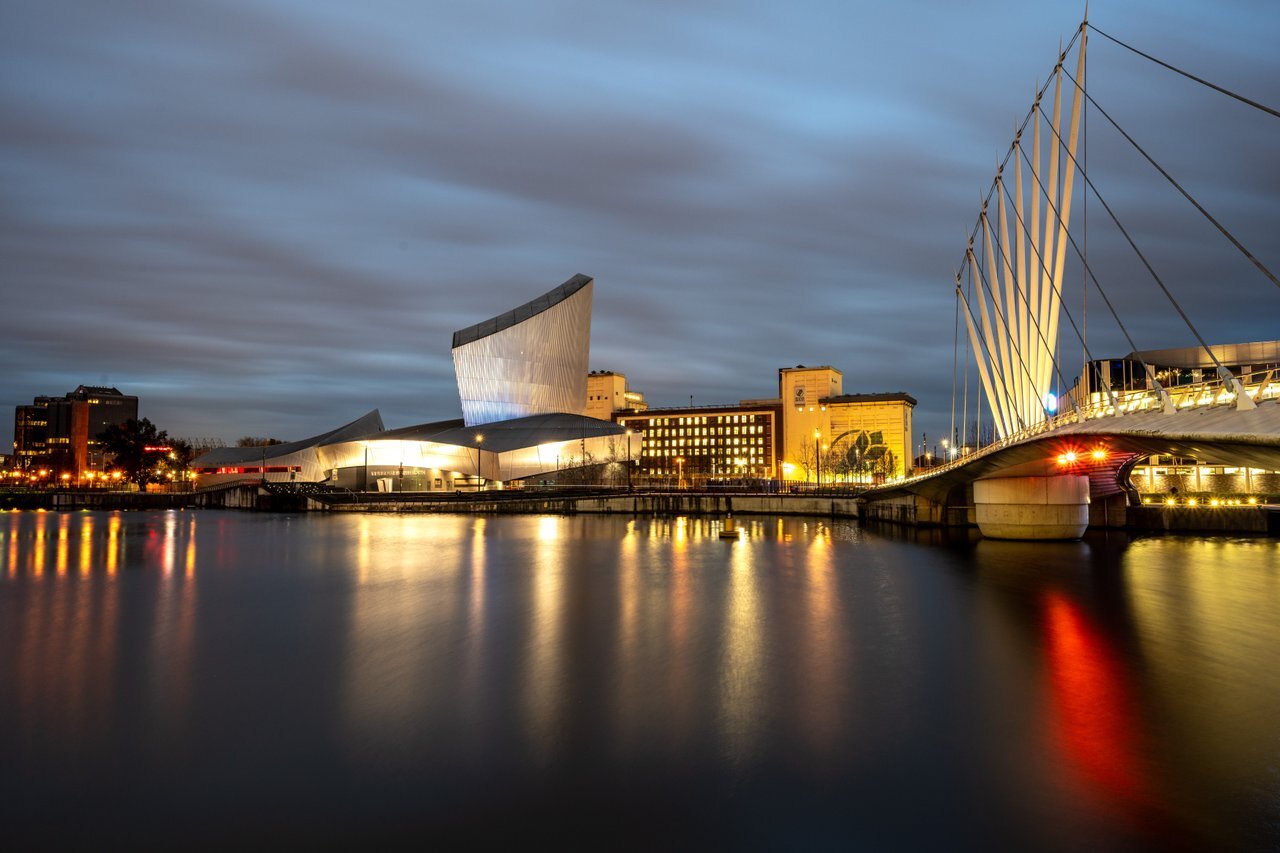
Ocean Gateway
Ocean Gateway is a transformative regeneration initiative in the Northwest of England, and Salford plays a key role in this ambitious project. Falling into Greater Manchester’s Western Gateway Growth Location, one of the largest development areas in Greater Manchester, this project incorporates Port Salford, a nationally significant freight terminal, significant new housing developments, the City of Salford Community Stadium and adjacent strategic development land and the RHS Garden Bridgewater.
Combined, these projects will deliver substantial job creation, new homes, and commercial spaces. The Ocean Gateway initiative aims to create a dynamic economic corridor between Manchester and Liverpool, bolstering the region's global competitiveness and forging new routes for trade. Over the next 50 years, The Peel Group’s Ocean Gateway will deliver an unprecedented scale of co-ordinated private sector investment across the Northwest of England.
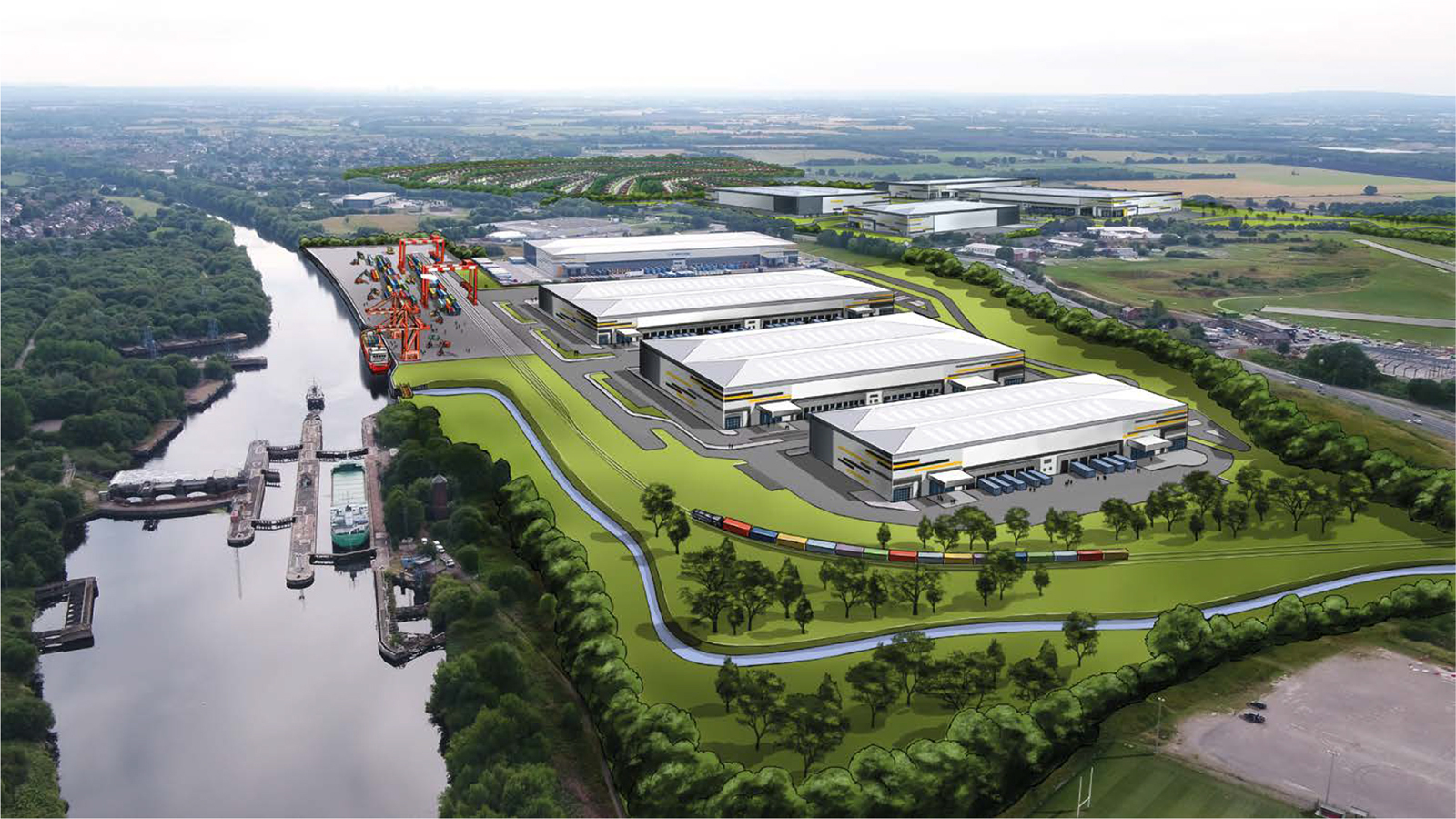
Port Salford
Port Salford is at the heart of Salford's ambitious regeneration plans and is set to become a key driver of economic growth in the region. The redevelopment of Port Salford is progressing through multiple phases, with Phase 1 already approved for the construction of a multi-modal freight interchange, including 155,000 sqm of warehousing space. This development positions Port Salford to become the UK’s only inland tri-modal port, connecting road, rail, and water transport.
The regeneration project aligns with broader plans for the Western Gateway, an area identified as a prime location for growth within Greater Manchester’s new 10-year growth ambition. The Western Gateway, which spans the Liverpool Road and M62 corridors, is now being explored for a Mayoral Development Zone (MDZ) that could attract substantial investment and job creation.
By integrating Port Salford Phase 2 and land near the City of Salford Community Stadium, the area is set to deliver up to 511,000 sqm of new employment floorspace, generating nearly 6000 jobs and an estimated £6.4 million in business rates. This regeneration is part of a wider effort involving the Greater Manchester Combined Authority (GMCA) and Trafford Council, promising significant opportunities for investors and developers in the coming years.
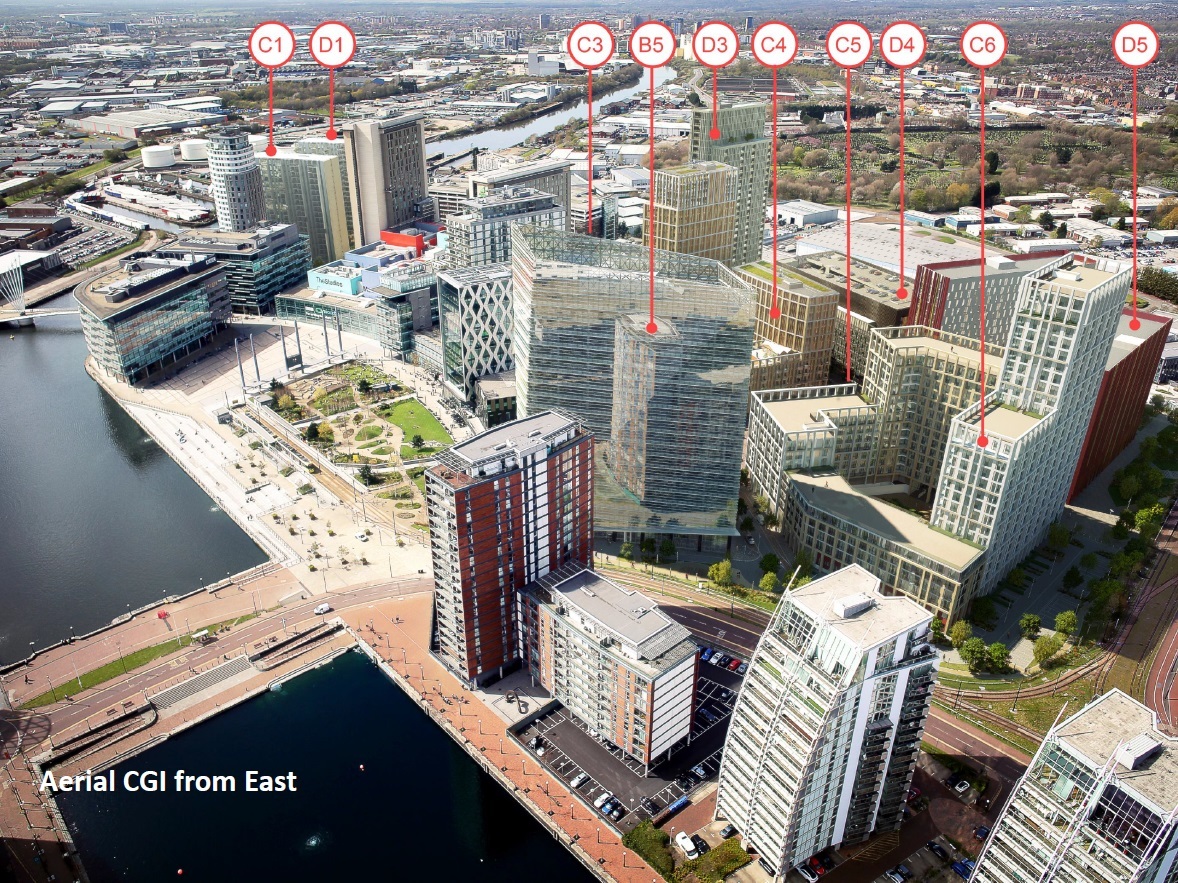
MediaCity
Having successfully completed the public realm for the first phase of MediaCity, Gillespies is now tasked with delivering the public realm design for the second phase. This follows the approval of ambitious £1 billion expansion plans that will see MediaCityUK more than double in size. The second phase will introduce ten new buildings, providing 540,000 square feet of Grade A office space, 1800 new apartments, and additional retail and leisure facilities. An extensive new public realm will enhance the area, complementing the broader development vision with vibrant public spaces, green areas, and improved pedestrian access.
This expansion will support the creation of a dynamic, mixed-use community at MediaCity, further reinforcing Salford’s position as a key destination for work, living, and leisure. The overall vision aims to create a sustainable and thriving environment, combining commercial growth with a high quality of life for residents and visitors.
The design also includes a new boardwalk and green spaces that will enhance the area's natural environment. The waterfront development draws inspiration from global locations like Oslo and Darling Harbour, focusing on creating a sustainable and dynamic environment.
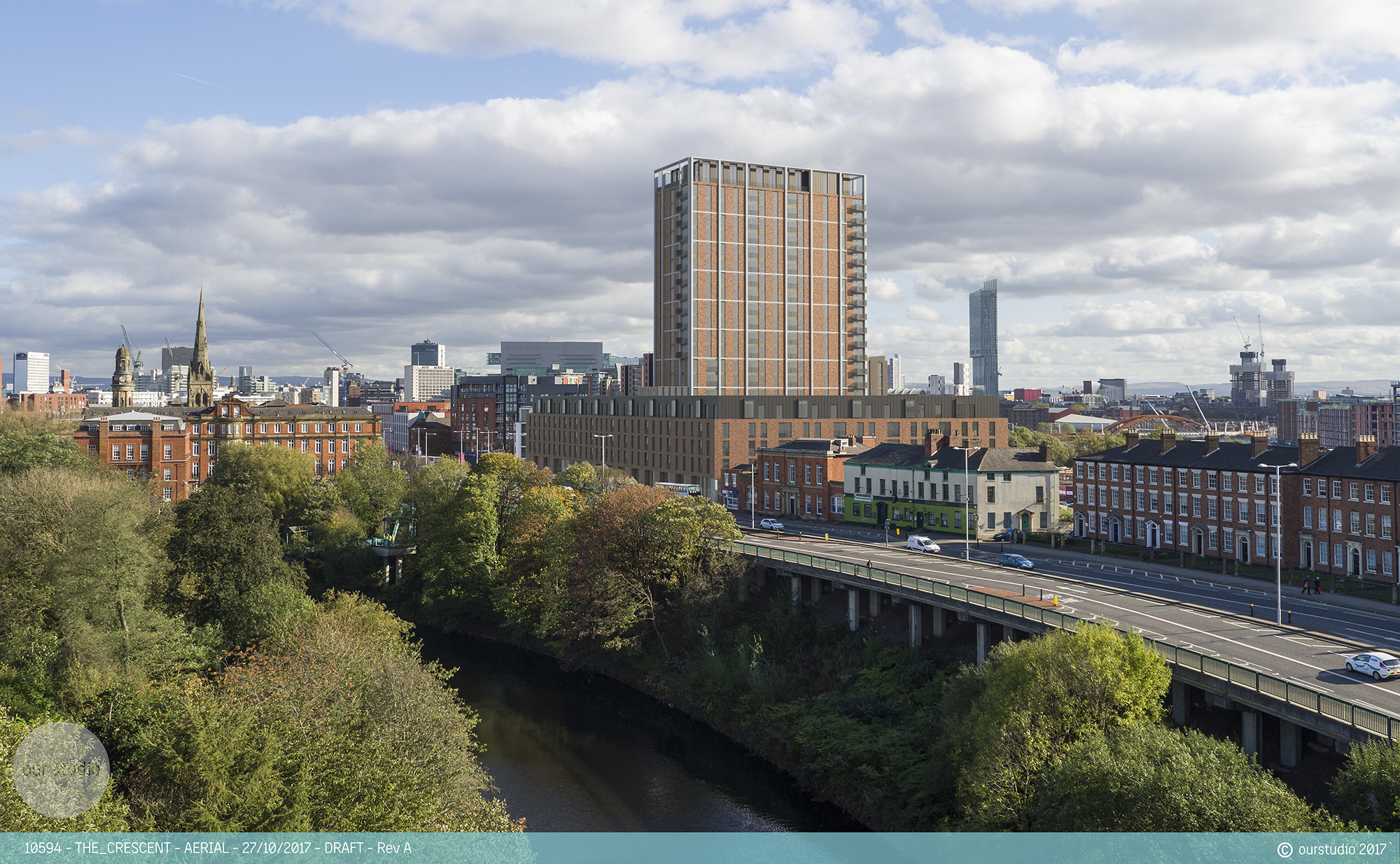
Crescent Salford innovation zone
Crescent Salford is a transformative £2.5 billion development set to redefine the city's landscape through six key projects: Innovation Zone, Parks and Rivers, Peel Park Campus, Transport Hub, Adelphi Village, and The Crescent. Collectively, these plans aim to generate up to 7000 full-time jobs, contributing an estimated annual GVA of £350 million, bringing in around £2.8 billion over the project's duration.
The development plans to introduce approximately 1.5m sq ft of commercial space and over 3000 homes, provided by over £1 billion in private-sector investment. This surge in economic activity is anticipated to increase business rates by around £90 million, funds that will be reinvested into Salford’s community to help it continue to deliver sustainable growth.
A cornerstone of the project is the establishment of an innovation district designed to spearhead regional growth. Complementing this is the implementation of climate-resilient infrastructure to promote sustainable travel throughout the area while providing high-quality green spaces with 1000 new trees.
The Crescent Innovation North component of the plan has received approval, encompassing nearly 1000 new homes on a 29-acre site around Salford Crescent. This phase is expected to create over 1800 jobs upon completion, injecting £30 million annually into the local economy.
Eccles
Eccles is an historic market town within the city of Salford, with a population of around 42,000 people. Eccles is sandwiched between areas that are growing rapidly. To the east, MediaCity and Salford Quays are set to grow, with 25,000 new jobs and 12,000 new homes by 2040. Trafford Waters and Port Salford to the west and south offer great development potential for up to 7500 jobs and 3000 new homes again by 2040.
Plans are underway to regenerate Eccles shopping centre, with proposals for new residential spaces, shops, and recreational areas. The £50 million project aims to regenerate the town’s economy and community life with modern designs and a focus on sustainability. These changes are expected to bring significant benefits to residents.
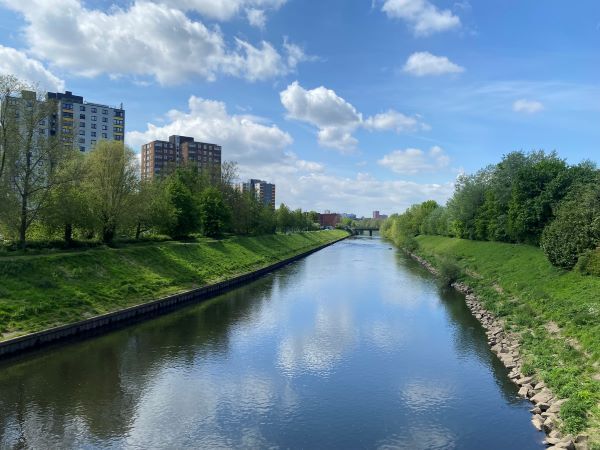
Swinton
Swinton, a town in Greater Manchester, blends its rich industrial history with modern developments. Once a centre for textile manufacturing, it has gradually evolved into a suburban area with a growing population. The ongoing regeneration aims to enhance Swinton’s appeal, creating a vibrant community hub and supporting its ongoing transformation.
Salford’s Swinton Square is set for regeneration, as the council plans to transform the area into a vibrant, modern shopping and leisure destination. The project aims to reverse years of decline by introducing new retail spaces, improved infrastructure, and community-focused amenities. The redevelopment seeks to boost local businesses and provide an enhanced environment for residents and visitors. This ambitious plan is part of a broader effort to rejuvenate Salford’s town centres and improve the local economy.
As Salford continues to evolve into a dynamic hub of innovation and sustainability, the upcoming MIPIM 2025 provides an excellent opportunity to explore these exciting developments in more detail. The team at Salford City Council will be on hand to discuss these projects and how they’re shaping the future of the city.